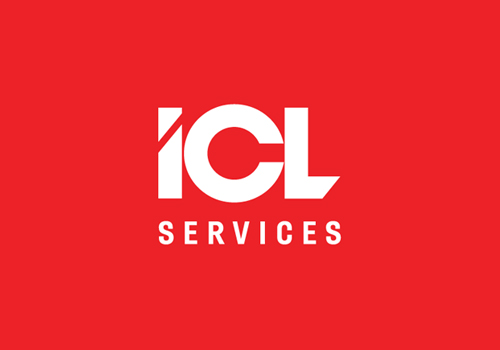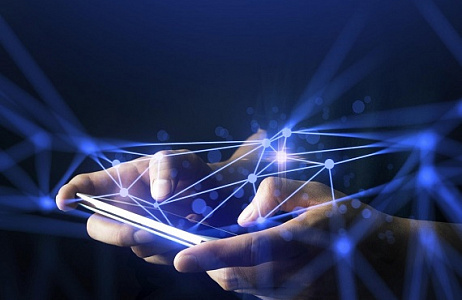Готово!
Скоро материал придет на указанную электронную почту. Также подписывайте на нас в Facebook
Ok
Technology trends 2020: following in the footsteps of open Innovations forum
The business sector understands that different technologies cannot be beneficial in isolation from each other. The main goal of companies is to find their perfect combination of technologies aimed at solving practical problems. ICL Services expert Nikita Kasyanov, participant of Open Innovations Forum 2019 in Moscow, stresses that combined innovations will be the hallmark of the main technological trends of 2020. The expert distinguishes the following trends as the most relevant:
Automation
Anything that can be automated will be so. The search for optimal software solutions and technologies for implementing automation strategy as well as understanding of how they function and interact with each other will become the main focus of companies.
The main component for this will be RPA (Robotic Process Automation) and iBPMS (Intelligent Business Process Management Suite), which complement each other perfectly. RPA allows integrating the more modern systems with non-API legacy systems that no longer meet the requirements but are still used due to the difficulty of replacing them. The goal is to transfer the data from one system into another without making any significant investments in complex system integration. RPA tools also help employees by performing routine, repetitive, day-to-day tasks. iBPMS is a class of software that is focused on business management in circumstances of constant change. Processes are modelled using a graphical interface and comprise a set of graphic elements in a certain order. Once the attributes of a process are set, it can be launched for execution (sending out tasks to users).
Moreover, the use of ML (Machine Learning) and NLP (Natural Language Processing) will significantly expand the possibilities of automation, expanding it even to the processes that could previously only be done by humans. Although automation is not the main goal, it often leads to the creation of a Digital Twin of an Organisation (DTO), which allows companies to visualise the interaction between different functions, processes and key performance indicators in order to increase their value. After that, DTO becomes an integral part of the automation process, continuously supplying real-time information about the company and providing it with significant business opportunities.
AI as a Service
Most companies have started exploring the possibilities of using AI to improve the quality of customer service and optimise their business processes. The trend will remain in 2020, and although people will be more accustomed to working with AI by then, training and deploying AI-based models will still require expensive computing power and highly qualified personnel.
For this reason, most AI-based software will continue to run on platforms-as-a-service, which will allow their users to simply enter their personal data and pay for computing power as they use it.
Currently, these platforms, provided by companies such as Amazon, Google and Microsoft, tend to have a very wide scope while needing adjustments in order to work on more specific tasks that your company may require. Throughout 2020, we will see a wider implementation of PaaS and a growing pool of their suppliers, that will likely start offering more specialised applications and services for completing specific tasks. It would mean that there will be no more excuse for companies not to use AI.
Edge Computing
Edge computing is a topology, in which the processing, collection and delivery of information are done closer to its sources, based on the idea that maintaining local and distributed traffic will reduce latency.
The current focus on edge computing can be explained by the need to provide IoT systems with the capability of autonomous and distributed functioning, which is critical to certain industries, such as manufacturing or retail. However, edge computing will become the dominant factor in almost every industry due to the growth of edge device computing power. Increasingly sophisticated devices, such as robots, drones, self-driving cars and operating systems, will accelerate the transition to the edge computing paradigm.
5G, the 5th generation of mobile communication technology, supporting NarrowBand Internet of Things (NB-IoT) and aimed at devices with low power and low bandwidth, will undoubtedly be one of the catalysts for the future development of edge computing technology.
Blockchain
Blockchain is a distributed database that stores all transaction data of a system’s participants as a ’chain of blocks’. Access to the records of a blockchain is available to all its users, acting as a common notary, which assures the truthfulness of the information within the database.
People have been talking about blockchain for the past several years, but its commercial application is hindered by a number of technological and organisational problems. In 2020, we will see how companies use individual blockchain elements to solve pressing issues. Here are a few examples of its application:
- Trade. Blockchain simplifies the process of buying and selling assets, including dealing in derivatives and trading private stock. Fujitsu has recently announced the world’s first rice trading platform based on the blockchain technology.
- Asset Tracking. With blockchain, you can track tangible assets within supply chains to determine their exact location and owner. This includes such examples as tracking cars through lending processes, artwork aftersales, etc.
- Loyalty Programmes. Blockchain allows you to track loyalty points and provide internal rewards, for example, for your employees or students.
AI Security
It is hard to argue with the fact that AI creates new opportunities for improving security systems: security vendors are already actively using machine learning to expand the functionality of their systems. But at the same time, the rapid development of AI creates new opportunities for cyber attacks, which increases the risks to information security.
There are three key aspects to consider regarding the impact of AI on security:
- Protecting systems with AI elements. This requires additional data protection for training, data pipelines and ML models themselves.
- Using AI to expand the capabilities of security systems. Using ML to recognise patterns, detect attacks and automate cybersecurity processes, when working in conjunction with information security analysts.
- Predicting malicious use of AI by attackers. Identifying and countering attacks will become an important element of information security.
In the new year, structures of information security and vendors will have to find way of dealing with new types of attacks, both at technological and organisational levels.
The trend of developing and applying digital technologies in practice continues. Experts note that the Russian market is not mature yet, but interesting implemented projects with the use of AI are already present on its business arena. Its leading industries include the financial sector, retail and logistics.
Related news
- 1 June
Launching the IT audit service
The service allows you to receive an objective assessment of the IT management system.
- 4 June
ICL company group is one of the best russian IT companies
ICL Group is the top 20 Russian IT company in the RIA Rating.
- 3 May
How to choose the best IT outsourcing Provider?
Sometimes outsourcing a particular project makes the most sense. Whatever your reason or reasons are for outsourcing, it is still important to properly manage the project, select the right Provider for the job and ensure all of the key elements are addressed.
- 27 April
Who is faster: clouds vs it market?
The demand for cloud computing in Russia is real.
- 5 September
How to Involve Employees in Ecoprojects
Environment Policy in Business: Responsibility to the World and a Financial Burden or Wise Investments?
- 28 February
Instruction: How To Organize Your Service Desk For Maximum Efficiency?
Key questions, arising from the operation of Service Desk.
- 30 October
IT service solutions to increase business efficiency
We will discuss key technologies that will help save money, support business sustainability, increase operating speed and customer satisfaction.
- 12 September
ICL Services standard for information security management of service projects
Information security incidents can be very damaging to business. According to 60% of directors and heads of financial departments and organizations, cyber security is one of the most serious risks (ACCA study), and the responsibility for ensuring cyber security often falls on IT specialists alone.
Stay informed
Subscribe to our newsletter and keep up with our latest news

